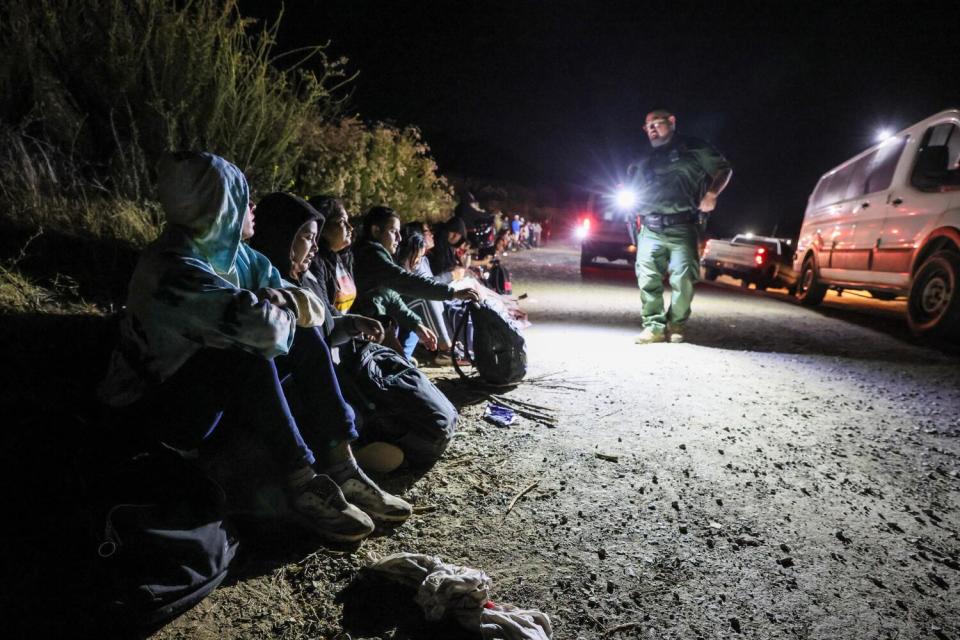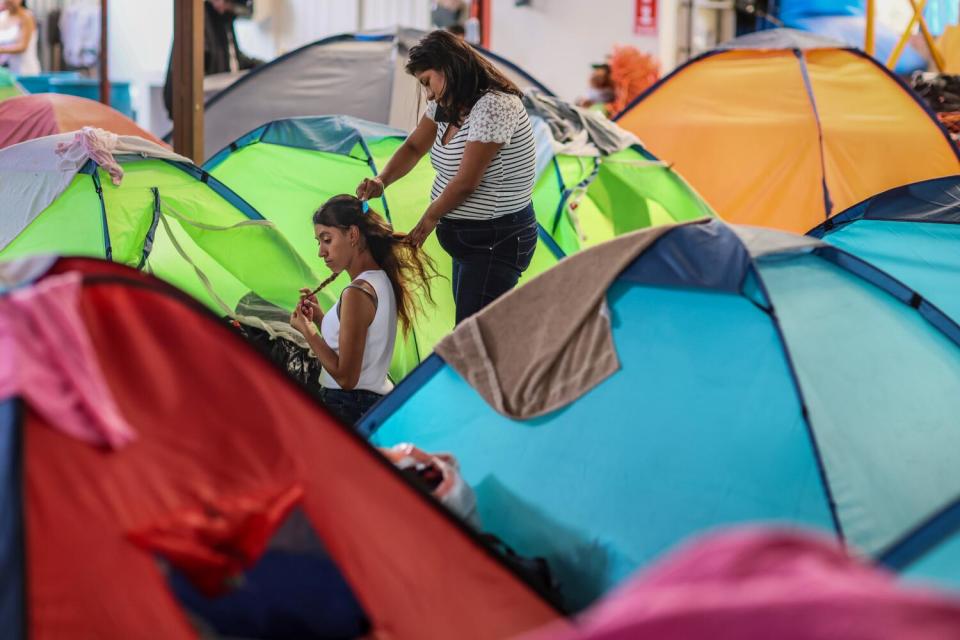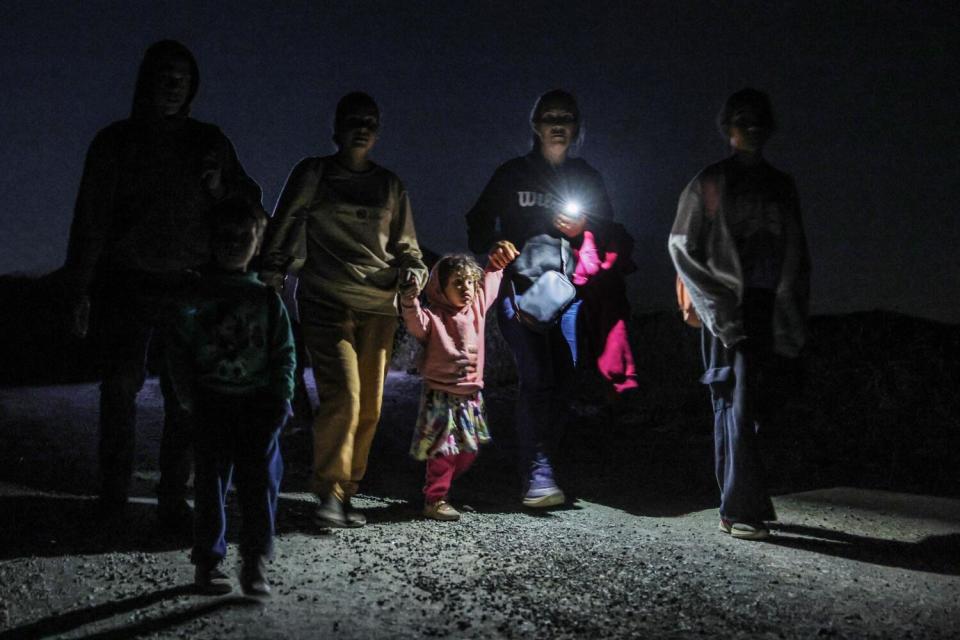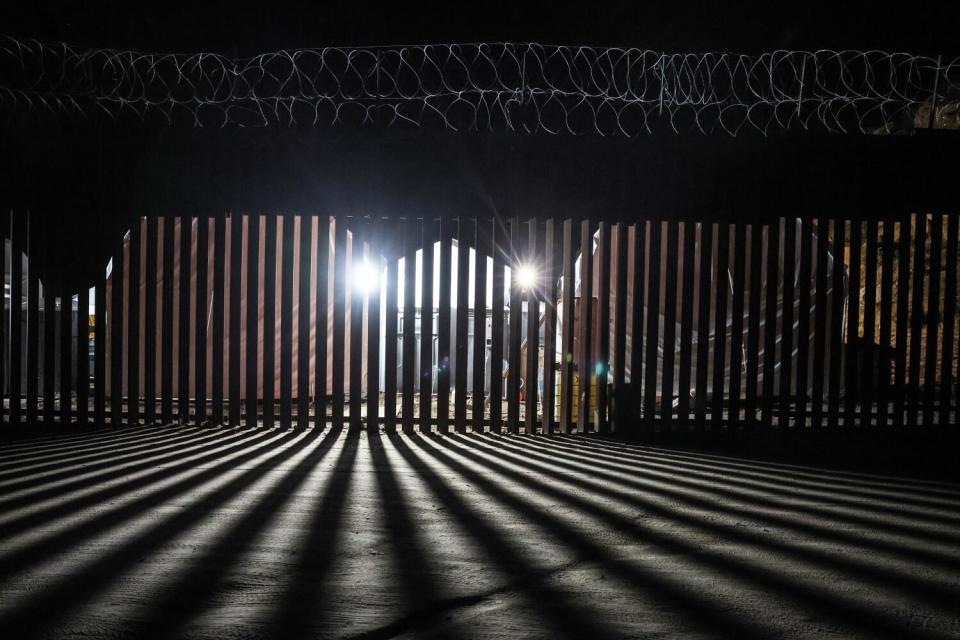Shortly after President Biden’s executive order limiting access to asylum took effect late Tuesday, 50 migrants completed a nine-hour trek through the mountains just north of Tecate, Mexico.
They lined up against the brush, in a dusty clearing a few steps from Highway 94, and waited for Border Patrol agents to pick them up. The migrants, a group of men, women and children from Cuba, Ecuador, China and Brazil, were exhausted and running low on food and water.
Many had never heard of the order, which raises the legal standard for asylum claims and blocks entry for those crossing the border illegally, while the average number of arrests exceeds 2,500 per day.
Read more: Biden signs an order to tighten the border with Mexico as the number of border crossings increases
Lucas Lu, 32, knew about it and feared he had arrived too late to seek asylum. The rule goes against American values, he said.
“It’s not fair,” he said, sitting with his legs crossed in the mud. “We risked our lives to get here.”

The Chinese former hotel manager had a back brace wrapped around his T-shirt and was leaning on a walking stick. He said he suffered a spinal cord injury while traveling by boat in Panama. Reaching the southern border had taken him three months.
Lu said he fled authoritarian repression in search of safety, dignity and the ability to speak freely without the threat of prison.
Just after 11 p.m., three sprinter vans and five other vehicles arrived on the scene.
“Gracias a Dios‘ exclaimed a woman in the dark. “Thank God.”
The officers took out garbage bags and told the migrants to dump their food and water. One picked up Lu’s walking stick and threw it into the bushes.
“None of this, okay?” he said.
They knocked on migrants’ doors and loaded them into vans. Another 45 migrants came down the hill, an officer said, plus groups of 40 and 90 in other areas.
Before and after the order went into effect at 9 p.m. Pacific Time, the night generally appeared relatively quiet, with many of the crossings east of San Diego deserted.


After the number of migrants increased, making San Diego the top sector across the border, arrests dropped again in recent weeks.
But the daily average of arrests between official ports of entry remains above the 2,500 threshold.
Read more: San Diego is now the top border region for migrant arrivals
On a call with reporters Wednesday, a senior Department of Homeland Security official said the day started with just over 9,000 people in custody who had been arrested before the order went into effect — similar to average figures over the past month. The agency saw no significant increase in the number of migrants trying to meet the deadline.
Migrants have since been removed under the order, the official said, but declined to provide figures. The agency is ramping up its efforts in the coming weeks to maximize the impact of the order.
Migrants from Mexico can be returned quickly, and the Mexican government has previously agreed to accept some migrants from Venezuela, Nicaragua, Haiti and Cuba. The official acknowledged that removing migrants from other countries, such as China, that do not regularly accept deportation flights will remain a challenge.
In Tijuana, Jose Garcia Lara, director of the Movimiento Juventud 2000 shelter, fears the executive order could spark a crisis if migrants get trapped in northern Mexico.
The shelter, which has a capacity for 200 people, has seen about 60 people a day, Garcia Lara said. In recent days that number had risen to a hundred.


Garcia Lara said shelter numbers tend to be low as more people choose to cross the border illegally. Shelter residents are among those waiting for an appointment with border agents through the U.S. Customs and Border Protection phone app, which is choppy and slow.
He remembers the arrival of the Haitians in 2016, the caravans of Central Americans afterward, the way the pandemic-era border rule kept migrants out of the U.S. and bunched up in Mexican shelters.
Lately, migrants have been coming not just from the Western Hemisphere, but from all over the world — and they will continue to come, he said. “We’re used to it,” he said. “What we will do is receive them.”
Rosario de Leon, 38, from the Mexican state of Chiapas, and her wife, Gracia Cortez, 27, from El Salvador, have waited two months for an appointment. They said they had faced discrimination as a gay couple, including in Tijuana, and were fleeing extortion from gangs.
Cortez said the new rule is fair. Hopefully this means more appointments can be opened through the app, she said.
“It’s not fair for someone to come in illegally while others are following the rules,” she said. “We all have to be patient.”
Across the border, at a trolley station in San Ysidro, 28-year-old Mariela Diaz waited Tuesday afternoon for her husband to be released from federal custody.
Diaz, from Colombia, charged her phone and followed news of the executive order.


“I’m an immigrant, but it’s also something that’s spiraling out of control,” she said. “I understand the president’s decision.”
She was relieved to arrive before the order went into effect. Still, she felt sorry for those who would be late.
Get the LA Times Politics newsletter. Deeply reported insights into law, politics and policy from Sacramento, Washington and beyond, delivered to your inbox three times a week.
This story originally appeared in the Los Angeles Times.







